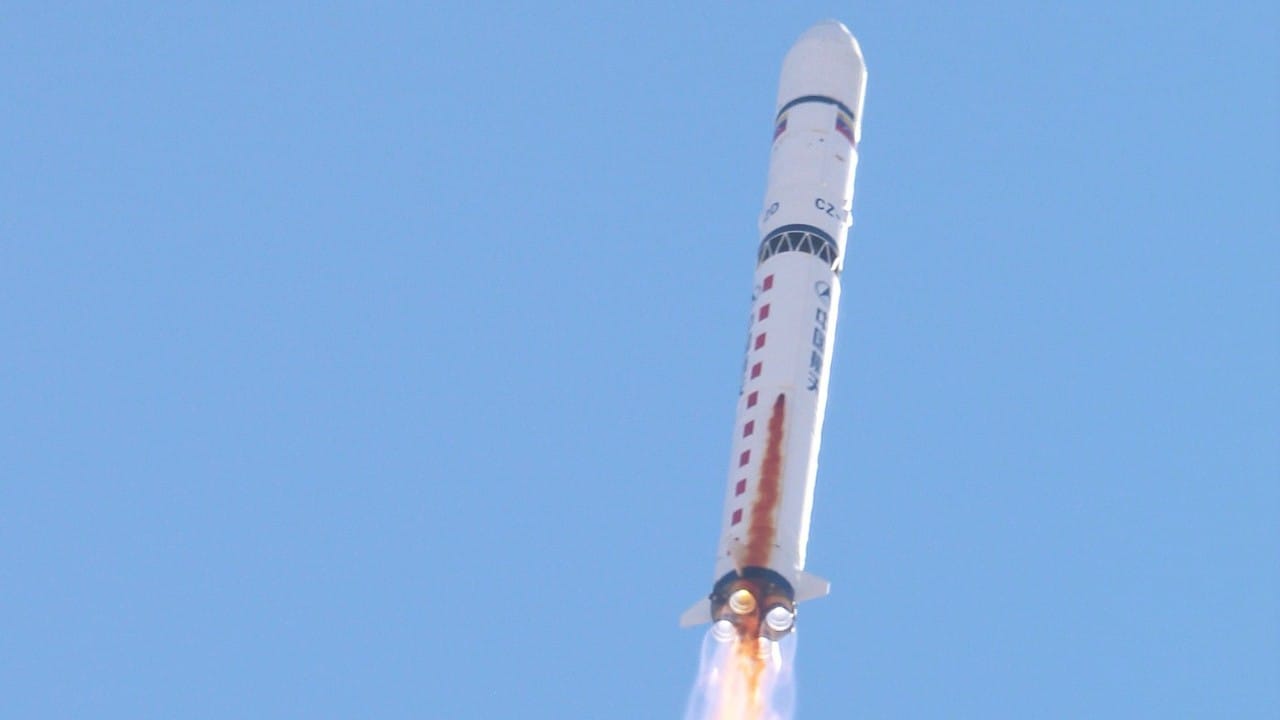The Biden administration, on June 8, sanctioned three US companies for sending blueprints and technical drawings of satellite and rocket technology and other defense prototypes to China.
China’s ‘Most Exported’ Aircraft — Meet PLAAF’s J-7 Fighter Jet That Crashed In Central Hubei Province Yesterday
The US Department of Commerce has blocked the three companies – Quicksilver Manufacturing Inc., Rapid Cut LLC, and US Prototype Inc. – from exporting items to foreign countries for 180 days. The punishment, known as a temporary denial order, is considered among the most severe civil sanctions available to the department.
These companies provide 3D printing services to customers, including space and defense technology manufacturers.
The Commerce Department says the customers would send blueprints and drawings of what they printed to these companies, who would, in turn, send that work to China, presumably to cut costs.

That transaction would have required US government approval, but no permission was requested, the Commerce Department said.
“Outsourcing 3-D printing of space and defense prototypes to China harms US national security,” Matthew Axelrod, an assistant secretary of commerce for export enforcement, said in a statement. “By sending their customers’ technical drawings and blueprints to China, these companies may have saved a few bucks — but they did so at the collective expense of protecting US military technology.”
The 11-page Commerce Department order does not allege that the blueprints were exploited by the Chinese military, but it does say the actions present “serious national security concerns”.
The Commerce Department used customers of the companies to check their records to ensure that their intellectual property was not compromised.
The latest incident could amount to serving the sensitive US military technology on the platter to China, who for years has been engaged in various forms of espionage aimed at stealing classified US military information, which includes technological secrets of advanced US military platforms.
Chinese Espionage
As EurAsian Times had reported earlier, China has been accused by the US of having built its advanced combat aircraft platforms, J-20 and FC-31, based on the stolen technology of the American F-35 fighter aircraft.
Chinese hackers reportedly stole many terabytes of data related to the F-35 program, including information on the F-35’s radar design, engine, etc.
J-20 cockpit vs F-35 cockpit pic.twitter.com/tLNFdHJ80J
— 彩云香江 (@louischeung_hk) December 8, 2021
In addition to that, the Chinese hackers also appear to have obtained material regarding the US Air Force’s F-22 Raptor and B-2 Stealth bomber, as well as space-based laser, missile guidance and tracking systems, and designs for nuclear submarines and anti-air missiles.
Apart from hackers, China also employed some traditional means of espionage to obtain B-2 Stealth technology. In 2005, an Indian-American engineer, Noshir Gowadia, was found providing assistance in the development of Chinese stealth technology, using the knowledge he had acquired from his involvement in the early stages of the B-2 Spirit stealth bomber.
Gowadia was angry for not being included in the project for future phases and therefore decided to start his own consulting company.
He admitted to many of the accusations leveled against him by Federal Investigators, though he claimed he had only used declassified materials. A jury disagreed, and Gowadia was sentenced to 32 years in prison, disappointing prosecutors who had sought life imprisonment.
In another case, a Chinese-born naturalized American citizen, Chi Mak, was found guilty in 2007 of conspiring to export sensitive defense technology to China. Mak worked as an engineer for California-based defense contractor Power Paragon, a part of L-3 Communications.
He had worked on Navy engines and had collected sensitive information from other engineers before sending it to China. When the FBI raided Mak’s home, they found stacks and stacks of classified information relating to naval technology, much of it still going into new Navy ships.
Also, the Chinese Y-20 heavy transport aircraft is said to have been developed using designs stolen from Boeing.
The Y-20 bears a massive resemblance to the US military’s Boeing C-17 Globemaster III. Interestingly, in 2009, a former Boeing employee was reportedly convicted of selling C-17 technical details to China while the Y-20 was still in early development.
While relatively smaller than C-17, Y-20 is still a massive transport aircraft capable of carrying heavy Chinese weaponry across the planet.
In April, China undertook an unprecedented overseas mission, as part of which six Y-20 heavy transport aircraft flew at the same time all the way to Serbia, surprising the flight trackers and aviation watchers.
Interesting find by @Prova_61 👍 … In fact I have never seen before this, what appears to be the hatch removed for the chaff & flare dispenser boxes.
(Images via @铁马军戈战沙场 from Weibo) pic.twitter.com/3xBOrkMlmI
— @Rupprecht_A (@RupprechtDeino) April 9, 2022
These Y-20s were carrying FK-3 surface-to-air missiles to Serbia, which was seen as China demonstrating its military might in Europe amid the ongoing Ukraine crisis.
According to Fu Qianshao, a Chinese military aviation expert, the operation demonstrated a considerable advance in the PLA Air Force’s long-range strategic transport capabilities, as well as the heavy transport aircraft’s intercontinental logistics support and maintenance capabilities.
- Contact the author at tanmaykadam700@gmail.com
- Follow EurAsian Times on Google News